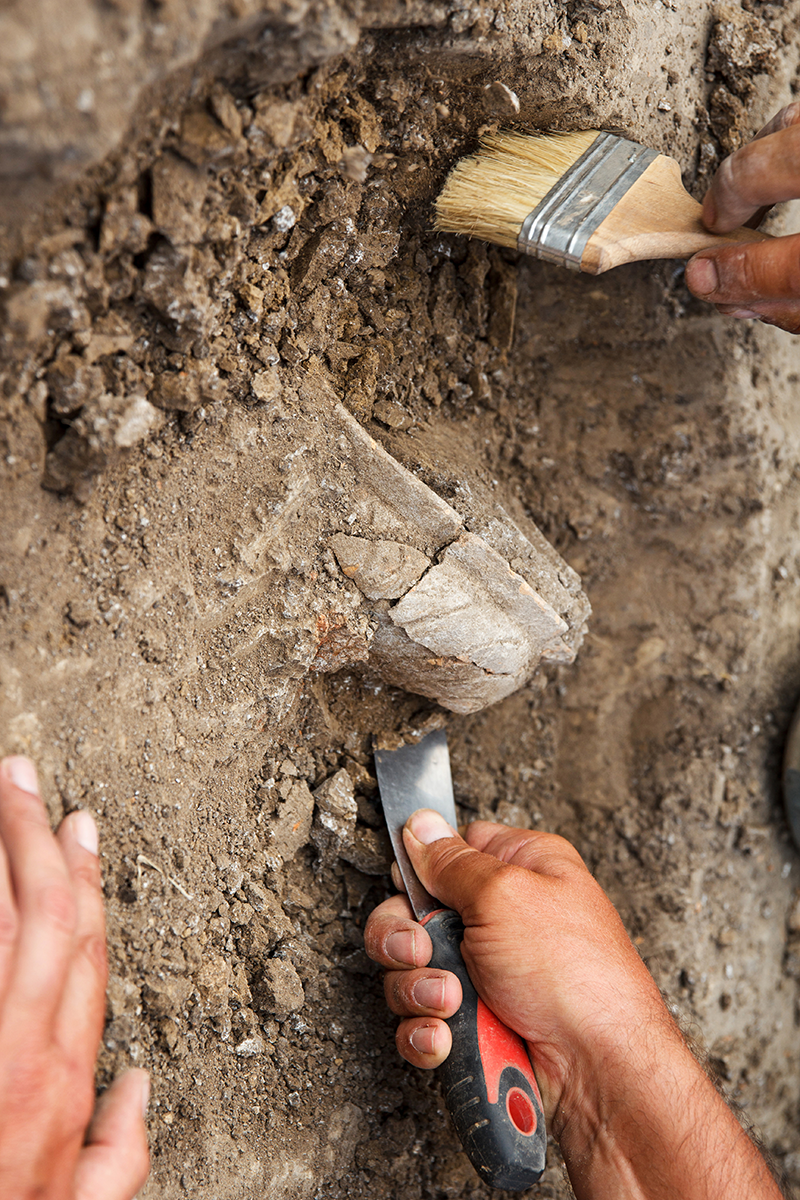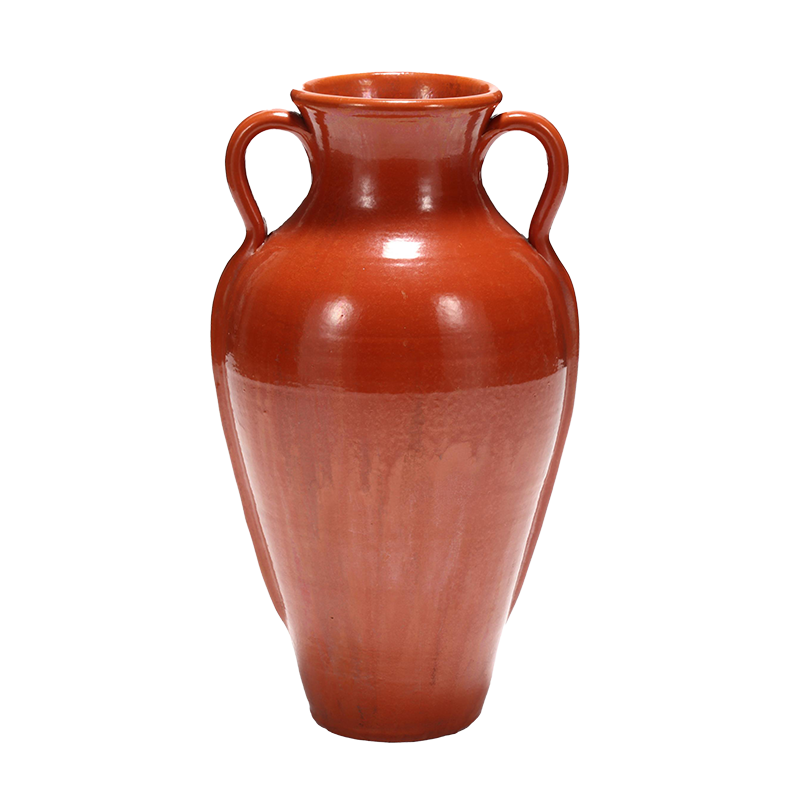
Mysterious Cherokee Tales
January 8, 2024
Read More about North Carolina Pottery
January 19, 2024Our upcoming issue, Fire and Clay, will be here soon. Here's a sneak peak of the opening article. If you can't wait, the issue is available as a download by purchasing either digital option below.
-
Digital Subscription
Original price was: $17.00.$15.00Current price is: $15.00. -
Single Digital Issue
$5.00 -
Single Issue
Original price was: $10.95.$9.95Current price is: $9.95. -
Subscription
Original price was: $32.00.$25.00Current price is: $25.00.
From Clay to Pots
Across the rolling landscapes of North Carolina, where the Blue Ridge Mountains give way to the gentle plains, there unfolds a narrative as old as the land itself. This tale is not only etched in the verdant scenery or whispered in the rustling pines; it is a saga of earth and fire, of hands that have coaxed clay into timeless forms. From the coastal tidewaters to the rugged highlands, North Carolina has harbored a pottery tradition as diverse and expansive as its geography. Here, the story of ceramics is not confined to a single region but is a testament to the entire state’s rich deposits of clay and its inheritance of cultural artisanship.
As we trace the contours of North Carolina's pottery heritage, we discover a legacy that traverses far beyond local boundaries, engaging with a broader history of human and material connection. From the esteemed Native American potters, whose ancestral knowledge is imprinted in every curve and pattern of their creations, to the myriad of influences that have shaped this craft over centuries, North Carolina has stood as a beacon of ceramic mastery.
Early Beginnings: Foundations in Clay
Long before the European settlers set foot on this fertile land, the first potters were already shaping North Carolina's destiny. These were the Native Americans, particularly the Cherokee and Catawba, with a pottery lineage stretching back an astonishing three millennia. Their technique was as pure as it was primal: the coil-building method. Imagine hands deftly rolling clay into sinuous lengths, stacking them in perfect synchrony to conjure vessels of purpose and artistry. Artifacts unearthed today—bowls and jars from the early sixteenth century—speak of a people intrinsically connected to their environment.
The indigenous population wasn't merely passing through this mountainous realm; they were leaving behind legacies. The eight fluted points from the Appalachian Summit, as reported by Phil Perkinson in 1973, became silent testimonials of their intimate bond with the land, even 10,000 years ago.
When European settlers arrived, they didn't just encounter a bountiful terrain but a treasure trove of knowledge. The majority of North Carolina, with the exception of the coastal plain, was a potter’s dream. Its clay-rich soil provided the foundation for settlers, who, using skills from their homelands, crafted their own unique styles of pottery. These newcomers, whether learning from the Native Americans or infusing their European wheel-built pottery traditions, began a synergistic dance with the earth that yielded more than just utilitarian wares. They crafted stories.
While they recognized the functional value of pottery—creating jars, jugs, and vessels that spared them the cost of storage—the true magic was in the cross-pollination of techniques. From the Moravians of Salem, who by 1766 had curated distinctive pottery designs, to communities in the Catawba Valley and Seagrove, the canvas of North Carolina began to fill with various pottery traditions. Yet, amid this tapestry, one thing was clear: pottery was not just about function or even art—it was the soulful reflection of a people and their land.
Archaeological Discoveries:


Archaeological Discoveries: Revealing the Deep Past of the Tar Heel State
The diverse terrain of North Carolina, from its sweeping mountains to its expansive plains, serves not only as a backdrop for natural splendor but also as a vault of human antiquity. These lands are silent custodians of millennia, cradling the secrets of ancient societies and their harmonious existence with the earth. Throughout North Carolina, the echoes of the Paleo-Indians traverse time, their legacy embedded in the soil and their narratives captured in the vestiges of their presence.
As archaeologists uncover the subtle imprints of Archaic era humans, each layer unearthed contributes to the complex tapestry of the state's history. The discovery of stone points and primitive tools paints a vivid picture of the daily lives and ingenuity of these early inhabitants. Transitioning into the Woodland period, the storyline of North Carolina's ancient inhabitants takes a creative turn. Here, the earth reveals stories not just of survival, but of expression and craft – the age-old tradition of pottery. This journey into the heart of North Carolina's prehistoric pottery unfolds a saga of artistry interwoven with cultural evolution, showcasing a people intimately tied to the very clay beneath their feet.
The Woodland period in North Carolina stands as a significant juncture in the annals of ancient craftsmanship, marking the advent of pottery in the region. The early phase of this period, known as the Swannanoa phase, witnessed the debut of ceramics. These pioneering creations, often decorated with cord-marked or fabric-impressed designs, encapsulate the prevailing artistic sensibilities of the time. As we progress into the Middle Woodland period, or the Pigeon phase, the pottery underwent remarkable refinement. Materials like crushed quartz began to be integrated into the ceramic fabric, leading to a more robust and compact paste. This advancement was coupled with meticulous finishing techniques, notably burnishing the interior surfaces using steatite pebbles, lending a polished finish to the creations.
Regional Distinctiveness and External Influences
North Carolina's pottery spectrum further blossomed with regional nuances and external influences. The coastal regions, with their distinctive Colington phase, produced pottery that often bore simple stamped designs or punctations. The Piedmont region, on the other hand, showcased the Yadkin phase, characterized by simple, tempered pottery often devoid of surface treatments.
Simultaneously, the cultural amalgamation in the region, aided by trade and migration, led to the infusion of external pottery styles. One can witness the influences from the Mississippian culture, especially in the later periods, where complex stamped designs and effigy vessels began to emerge.
Pottery in North Carolina was not just an artistic expression; it was intrinsically linked to the daily and ceremonial lives of the communities. Utilitarian pots, used for storage, cooking, and serving, were commonplace. However, certain specialized vessels, adorned with intricate designs or symbolic motifs, likely held ceremonial or ritualistic significance.
The presence of burial urns and other such ceremonial pots in archaeological sites underscores the cultural and spiritual importance of pottery.
The legacy of pottery in North Carolina offers a window into the lives, beliefs, and artistic endeavors of its ancient inhabitants. Every shard, fragment, and complete vessel unearthed speaks of a time when hands molded clay into functional and symbolic masterpieces.




Influential Figures Shaping North
Carolina's Pottery Legacy
In North Carolina, pottery is more than an art—it's a legacy, passed down through generations, each bringing their own flair, innovation, and passion. Some individuals have left an indelible mark on this tradition, shaping its course and ensuring its survival amidst changing times.
Within the rich tapestry of pottery traditions in the Catawba Valley, the name Daniel Seagle stands out prominently. Active in the heart of the 19th century, Seagle wasn't just another potter; he was an innovator whose distinct craftsmanship significantly influenced the pottery landscape of the region.
He is especially celebrated for introducing the alkaline glaze, a pioneering technique that brilliantly utilized wood ash and lime to produce a unique finish on pottery. This wasn't merely a decorative choice; it was an innovation that melded function with aesthetic appeal, resulting in pieces that were treasured both for their utility and their beauty. Seagle’s influence transcended his lifetime.
His introduction of the alkaline glaze did not just add another method to the potter's toolkit—it set a new standard. As a result, generations of potters who followed in the Catawba Valley adopted, adapted, and revered this technique, making the alkaline glaze an emblematic signature of the region's pottery. Through his work, Seagle cemented his legacy, ensuring that his contributions to the craft would be remembered and celebrated for centuries to come.
In the intricate tapestry of North Carolina's pottery heritage, J.B. Cole stands out as a towering figure, inseparably intertwined with Seagrove, one of the most celebrated pottery hubs in the state. Founding the J.B. Cole Pottery in the nascent days of the 20th century, Cole's craftsmanship was marked by an exceptional versatility, creating an array of pieces that ranged from essential utilitarian objects to captivating decorative artifacts. With an unwavering commitment, he was passionate about utilizing local clays and emphasized the importance of preserving and promoting indigenous pottery techniques.
Because of this dedication, Seagrove's ceramic works retained their genuine allure, reflecting the profound historical and cultural roots of the region. But J.B. Cole's lasting legacy is not just encapsulated in the exquisite ceramics he left behind; it resonates vibrantly in the enthusiastic community of potters he mentored and galvanized. His seminal contributions transformed Seagrove into a thriving epicenter of pottery, magnetizing both seasoned artisans and eager enthusiasts from various corners of the world.
Within the illustrious history of North Carolina pottery, the Moravians of Old Salem stand out as exemplars of ceramic artistry. Their legacy, deeply entrenched since the 18th century, shines particularly brightly through the seminal contributions of figures like Rudolph Christ.
Christ, as a master potter, played a pivotal role in establishing and refining the Moravians' distinctive style. He was instrumental in perfecting intricate slip decoration techniques and championing signature forms such as animal-shaped bottles and the emblematic "Moravian Star." These innovative potters masterfully amalgamated traditional European methodologies with the rich resources of the New World, crafting ceramic pieces that seamlessly blended functionality with aesthetic splendor.
The profound influence of Christ and his fellow Moravian potters is undeniably present in today's ceramic landscape. Modern-day potters, while fostering their unique identities, frequently pay homage to the ageless Moravian designs, drawing deep-rooted inspiration from their unmatched artistry.
As we trace the lineage of North Carolina's pottery, it's evident that it isn't just about clay and fire. It's about visionaries who molded the future with their hands, leaving behind legacies as enduring and captivating as their creations.
Reshaping Traditions:
The Evolution of North Carolina's Pottery
In the annals of North Carolina's history, the Industrial Revolution stands as a formidable turning point, reshaping its storied pottery traditions. Before this seismic shift, pottery was not just a craft but a necessity. Typically, rich clay deposits in regions like Seagrove and the Catawba Valley fueled a thriving pottery industry, essential in a world yet untouched by industrialization.
Then came the age of glass jars, sweeping across the landscape with the unstoppable force of modernity. As these jars became widely accessible, the once-crucial demand for pottery plummeted, almost overnight. This sudden change hit North Carolina's potters like a storm, drying up markets and extinguishing long-standing traditions. In many places, pottery practices vanished, leaving behind only echoes of a once-vibrant heritage.
In this crisis, North Carolina's potters faced divergent paths. The Catawba Valley witnessed an extreme contraction of its pottery community, with Burlon Craig emerging as the lone torchbearer. Unencumbered by competition, Craig steadfastly adhered to tradition, crafting pot after pot in the age-old manner. Over decades, his dedication caught national attention, igniting a resurgence of interest among young potters. This led to a renaissance of sorts, with the valley's pottery now bearing Craig's unmistakable imprint—a testament to his loyalty to tradition.
Seagrove's story took a different turn. Here, the number of potters dwindled but never to the brink of extinction. The persisting competition, coupled with changing market dynamics, spurred a pivot towards collector's pottery—pieces valued more for their aesthetics than utility. This environment of creative rivalry fostered a hotbed of innovation, attracting more potters and diversifying the region's pottery landscape. Today, Seagrove stands as a vibrant hub of artistic pottery, marked by an abundance of styles and creative expressions.
Meanwhile, the Cherokee potters navigated these turbulent waters by adapting their styles to appeal to tourists. This strategic shift ensured the survival of their craft through tough times. In recent years, a return to their roots has seen Cherokee pottery once again reflect its traditional styles, preserving a vital part of their cultural heritage. Shiny, black exteriors replaced the traditional smoke patterns, and the pottery became more decorative than functional. The latter part of the 20th century saw a resurgence in interest towards the older, traditional Cherokee pottery styles.
Thus, the Industrial Revolution, a game-changer in the truest sense, carved distinct paths for North Carolina's pottery regions. Each area's response to this challenge has left an indelible mark on the state's pottery landscape, shaping a diverse and rich tapestry of ceramic art that continues to evolve and inspire.


Pottery Across North Carolina Today
In North Carolina, the rich soils and cultural tapestry of the entire state have fostered a profound appreciation for pottery. This tradition thrives vigorously, nurtured by a dynamic arts community that honors ancestral craftsmanship while embracing modern artistic expression. The potter's wheel turns across the state, not just confined to the crafting of functional ware, but also spinning narratives, shaping experiences, and sparking dialogues in every finished work. The state is alive with pottery events that celebrate this time-honored art form. Schools like the esteemed Penland School of Craft and the John C. Campbell Folk School, not limited to the mountains but influential throughout the state, exhibit the work of both rising and renowned artisans, providing education and community engagement through workshops and shows. Festivals and markets, including the famed Seagrove Pottery Festival, the Catawba Valley Pottery Festival and the WNC Pottery Festival become lively hubs for potters to exhibit their creations, foster connections, and revel in collective artistic passion. Attendees at these gatherings are regaled with an array of pottery styles, each narrating a unique story of its maker.
From the coastal plains to the Piedmont and up to the Appalachian Range, clay speaks of the state's multifaceted cultures, ingenious craftsmanship, and community narratives. North Carolina's pottery scene reflects not just a record of artistic endeavors but also a dynamic mirror that showcases the evolving aspirations and innovative spirit of its populace. The enduring legacy of pottery in North Carolina is a testament to the state's enduring spirit of resilience and inventiveness. Every pot, be it a product of necessity or an artifact of artistic whimsy, embodies a piece of history, a snapshot of the present, and the aspirations of the artisan. As North Carolina steps into the future, its pottery remains a powerful emblem of cultural continuity. It is a call to preserve our heritage, to seek out new methods and ideas, but above all, to keep weaving stories of aspiration, determination, and splendor. These stories, imprinted in earthenware and stoneware, kiln-fired with ambition, reveal the very essence of North Carolina's heart and spirit.








